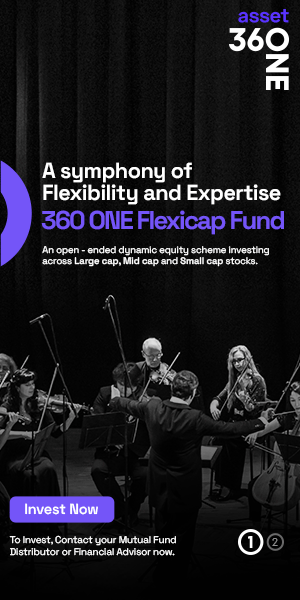Sundaram Balanced Advantage Fund: Good investment in volatile markets

Dynamic Asset Allocation
Dynamic Asset Allocation changes equity and debt allocations of the portfolio based on market conditions. Dynamic Asset Allocation models usually increase asset allocation to equity and reduce allocation to debt, if equity valuations fall. If equity valuations increase, then dynamic asset allocation models reduce allocation to equity and increase allocation to debt. The aim of dynamic asset allocation is to reduce downside risk and generate risk adjusted returns. Balanced Advantage Funds are hybrid funds which dynamically rebalance their asset allocation between equity and debt based on dynamic asset allocation model.
How Balanced Advantage Funds work
- Net or Active Equity: This is the un-hedged equity exposure of the fund. Net equity allocation is determined by a quantitative dynamic asset allocation model based on market conditions.
- Fixed Income: Fixed income allocation is determined by the asset allocation model but is usually capped at 35% to ensure equity taxation.
- Arbitrage: This is the fully hedged equity component which is not exposed to market risks but generates arbitrage (risk-free) profits based on price differences in cash and futures market or corporate actions. The arbitrage component reduces the net equity exposure and at the same time, helps to keep the gross equity exposure above 65%, which enables equity taxation.
Sundaram Balanced Advantage Fund
Sundaram Balanced Advantage Fund works on the dynamic asset allocation strategy based on market valuations. After the merger of Sundaram and Principal AMCs, the two dynamic asset allocation funds of the merging partners, Principal Balanced Advantage Fund and Sundaram Balanced Advantage, were merged into a single scheme. The dynamic asset allocation model of the fund defines valuation bands and corresponding asset allocation ranges for each band. Valuation bands are based on Trailing Twelve Months (TTM) Nifty Price Earnings (PE) multiples. The scheme now has Rs 1,593 crores of assets under management (AUM), as on 31st December 2022. The expense ratio of the scheme regular plan is 2.08%.
The chart below shows the growth of Rs 10,000 investment in Sundaram Balanced Advantage Fund since inception. The CAGR since inception is 9.65%. Sundaram Balanced Advantage Fund is also one of the most consistent performers in the category of balanced advantage or dynamic asset allocation funds. Advisorkhoj has its proprietary in-house methodology of identifying consistent performers based on average rolling returns and rolling returns outperformance versus peer funds. We in Advisorkhoj, think that performance consistency is one of the most important performance parameters in achieving long term investment objectives, be it capital appreciation or income.

Source: Advisorkhoj Research. As on 24th January 2023
Monthly Returns of Sundaram Balanced Advantage Fund in 2022
The chart below shows the monthly returns of Sundaram Balanced Advantage Fund versus the Nifty in 2022. You can see that the scheme was able to provide relatively stable returns to investors. The first half of CY 2022 was exceptionally volatile due to Russia’s invasion of Ukraine but the scheme was able to provide a more stable investment experience to investors.

Source: Advisorkhoj Research. As on 24th January 2023
Limited Downside Risk
The table below shows the biggest market drawdowns (corrections from peak to bottom) since the inception of Sundaram Balanced Advantage Fund. You can see that the scheme was able to limit downside risk for investors in highly volatile markets. You can also see that the scheme was able to recover its losses, relatively faster. As such, Sundaram Balanced Advantage Fund can be a good investment choice for investors who do not have high risk appetites, including new investors.

Source: Advisorkhoj Research. As on 24th January 2023
Tax Advantage
One of the biggest benefits of Balanced Advantage Funds is that they enjoy equity taxation – short term capital gains (investment held for less than 12 months) are taxed at 15%, while long term capital gains (investment held for more than 12 months) up to Rs 1 lakh are tax free – long term capital gains in excess of Rs 1 lakh are taxed at 10%.
SIP returns
The chart below shows the growth of Rs 10,000 monthly SIP in Sundaram Balanced Advantage Fund since the scheme’s inception. Over the last 10 years, with a total investment of Rs 12 lakhs through monthly SIP, you could have accumulated a corpus of over Rs 20 lakhs. The SIP XIRR return of the scheme since inception is 9.8%.

Source: Advisorkhoj Research. As on 24th January 2023
Why this is a good time to invest in Sundaram Balanced Advantage Fund?
Over the past 2 years, inflation has been high globally. This is partly due to huge amount of liquidity pumped into the financial system by central banks in response to the COVID-19 pandemic. Another cause of high inflation is the supply chain disruptions caused by the pandemic and lockdown. Russia’s invasion of Ukraine in 2022 and ensuing sanctions have aggravated the inflation. Central banks like the US Fed and our RBI responded by hiking interest rates. Interest rate hikes and high inflation have caused economic headwinds. Europe is in recession and there is a chance that the US economy may also go into a recession in 2023.
At the same time, global inflation has been stubborn and we may have to remain in a high interest rate environment for a longer period of time than earlier anticipated. High valuation of Indian equities is another cause of concern, at a time when we face economic headwinds due to global economic conditions. As such, there is uncertainty about short term market outlook. While there a headwinds to the market, there are positive signs like Europe coping with the energy crisis, China re-opening and inflation cooling in the US, corporate earnings outlook in India and resilience of the Indian economy. In changing times, Sundaram Balanced Advantage Fund which manages asset allocation dynamically with changing market conditions may be suitable for investors.
Who should invest in Sundaram Balanced Advantage Fund?
- Investors looking for capital appreciation and income over long investment horizons
- Investors who want limited portfolio stability and limited downside risks
- Investors with moderately high risk appetites
- Investors with minimum 3-5 year investment tenures
- First time investors with sufficiently long investment horizon can invest in this scheme
Investors should consult with their financial advisors if Sundaram Balanced Advantage Fund is suitable for their investment needs.
Mutual Fund Investments are subject to market risk, read all scheme related documents carefully.
Queries
-
What is the benefit of mutual fund STP
Aug 29, 2019
-
How much to invest to meet target amount of Rs 2 Crores
Aug 26, 2019
-
Can I achieve my financial goals with my current mutual fund investments
Aug 24, 2019
-
Can you tell me return of various indices
Aug 19, 2019
-
What would be the post tax return on different investments
Aug 18, 2019
-
Which Principal Mutual Fund scheme will be suitable for my retirement corpus
Aug 16, 2019
-
What is the minimum holding period for availing NCD interest
Aug 4, 2019
Top Performing Mutual Funds
Recommended Reading
Fund News
-
Mr. Navneet Munot's 'Person of the Year 2025'
Dec 31, 2025 by HDFC Mutual Fund
-
Zerodha Mutual Fund launches Zerodha Nifty Short Duration G Sec Index Fund
Dec 26, 2025 by Advisorkhoj Team
-
Groww Mutual Fund launches Groww Nifty Chemicals ETF
Dec 26, 2025 by Advisorkhoj Team
-
DSP Mutual Fund launches DSP Nifty Next 50 ETF
Dec 19, 2025 by Advisorkhoj Team
-
DSP Mutual Fund launches DSP Nifty 500 Index Fund
Dec 19, 2025 by Advisorkhoj Team














